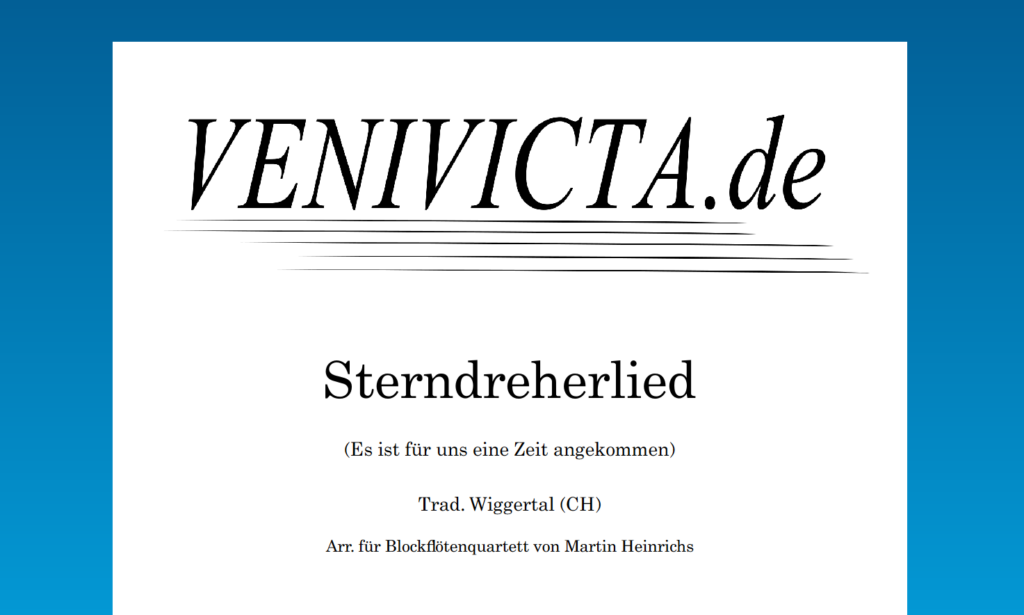Arr. for Recorder Quartett / Arrangement für Blockflötenquartett
Would you like to donate something for your free download?
Möchtest Du etwas spenden für Deinen kostenlosen Download?
The popular melody of the song comes from the tradition of the carol singers in the Swiss Wiggertal valley in the canton of Lucerne. The song first appeared there in the 19th century. In 1906, folk song collector Alfred Leonz Gaßmann (1876-1962) reported on the custom of Epiphany singing, whereby the singers went from house to house in the evening and proclaimed the birth of Jesus Christ with this song.
A singer (‘Sterndreher’) carried a star in front of them, which was covered with different coloured paper and made an impressive picture with a candle shining from the inside. The song was also known in Switzerland as the ‘Sterndreherlied’, derived from the star bearer. The custom of carol singing in the Wiggertal was practised until the end of the 19th century, but then died out. Quelle Wikipedia.
Die populäre Melodie des Liedes stammt aus dem Brauchtum der Sternsinger im schweizerischen Wiggertal im Kanton Luzern. Dort kam das Lied im 19. Jahrhundert auf.
Der Volksliedsammler Alfred Leonz Gaßmann (1876–1962) berichtete 1906 von dem Brauch des Dreikönigssingens, wobei die Sänger am Abend von Haus zu Haus zogen und die Geburt Jesu Christi mit diesem Lied verkündeten. Ein Sänger („Sterndreher“) trug einen Stern voran, der mit verschiedenfarbigem Papier überzogen war und mit einer aus dem Innern leuchtenden Kerze ein eindrückliches Bild abgab.
Abgeleitet von dem Sternträger wurde das Lied in der Schweiz auch „Sterndreherlied“ genannt. Der Sternsingerbrauch im Wiggertal wurde bis zum Ende des 19. Jahrhunderts praktiziert, erlosch dann jedoch. Quelle Wikipedia.

